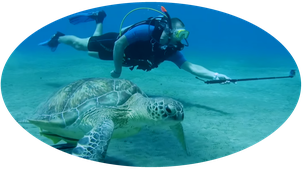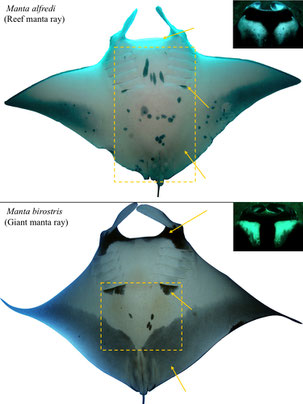Citizen Science - Be part of conservation
"In the end we will conserve only what we love; we will love only what we understand;
and we will understand only what we are taught." (Baba Dioum)

This quote is very true as governments who decide about protection zones will only protect what they understand.
Every year millions of sharks are killed for their fins or caught as “bycatch” like many other marine wildlife like manta rays, turtles, sea lions amongst others. One way to ensure that a species may survive is to protect those areas key for their reproduction (mating, birthing, etc.). Until now only 5 % of the world oceans are truly protected! Furthermore, we don’t yet know precisely the areas where for example, whale sharks give birth or mate! In order to ensure that these gentle giants will not go extinct we need to identify such areas and create marine reserves and sanctuaries, in order to halt the population declining further. The Galapagos Islands could be one of the key locations where adult female whale sharks give birth and is already recognized as a vital nursery for other shark species in the Eastern Tropical Pacific Region. On our Shark Conservation Dive Trips we collect data which furthers our understanding of whale sharks and other marine wildlife and that helps us to promote Conservation through education and awareness.
Why join our Shark Conservation Dive Trip?

- You get to dive together with an expert shark scientists in „shark rich" waters who will share all their knowledge about sharks and shark conservation with you.
- Learn how you as a diver can support the conservation of sharks, mantas and other marine wildlife and become a Shark Ambassador yourself – no scientific background needed.
- You will be supporting directly both science and conservation as for each diver traveling on our Shark Conservation Dive Trip, we make a donation for research carried out by the Galapagos Whale Shark Project.
Photo Identification programs
Photo identification is not only submitting a photo. Different platforms track different animals throughout our world's oceans. We believe that if everybody (naturalists, passengers, guides, divers and snorkelers) contributes and collaborates it would be vital to our understanding of the oceans and their marine life. Scientists can only be in one place at one time. By harnessing the power of millions of ambassadors, we can expand the scientific knowledge exponentially while supporting conservation of these marine wildlife.
Important: Set your camera to local time Galapagos. Photos support more if you summit it with date, local time and location if possible.
Whale Shark Identification - worldwide
Galapagos is one of the few places where you will find 99 % female adult whale sharks. That makes it even more important to upload your photos from here. This Identification program is for all over the world. You see a whale shark? Summit your photo.

The Wildbook for Whale Sharks photo-identification library is a visual database of whale shark encounters and of individually catalogued whale sharks. The library is maintained and used by marine biologists to collect and analyze whale shark sighting data to learn more about these amazing creatures.
Each whale shark has an individual fingerprint: the pattern of spots behind the gills on the left or right sides.
The Wildbook uses photographs of this skin patterning behind the gills of each shark, and any scars, to distinguish between individual animals.
Summit your photo now: www.sharkbook.ai
Shark Count (sharks, rays, turtles, sunfish) - Galapagos, Ecuador, Cocos, Mexico
Shark Count is a user-friendly tool / app that allows divers visiting Galapagos to help monitor marine life in the Galapagos Marine Reserve.
Using Shark Count, divers become “citizen scientists” and make important contributions to our understanding of Galapagos marine ecosystems by recording the sharks, sea turtles, rays and ocean sunfish they encounter during their dives.
The Shark Count app displays individual reports contributed from divers at the top 20 dive sites around the archipelago. Charts and maps show the number of species observed during each dive and the best sites and times to see each species.
All data is shared with the Galapagos National Park Directorate and will benefit research and management decisions focused on protecting the Reserve’s incredible marine life.
Get the app now and start counting sharks, sea turtles, rays and ocean sunfish during your adventure in Galapagos for Apple.
More information: www.sharkcount.org
Internet of Turtles - worldwide
In the Galapagos Islands, you can spot Green, Galapagos, Hawksbill, and other sea turtle species.
The gold standard for monitoring sea turtle populations involves long-term capture-mark-recapture (CMR) studies. These studies allow researchers to assess population trends and support effective conservation efforts.
By utilizing Machine Learning, Citizen Science, and Conservation Research, you can contribute by photographing turtle patterns. Whether the turtle is new to the database or a previously recorded one, your submission helps build a more comprehensive understanding of these animals. Learn more at https://iot.wildbook.org/.
Photographing the unique patterns on the turtle’s face, allows for individual identification. These images are matched with existing databases to determine if the animal is a new or recurring sighting. Images where the turtle's head is angled or somewhat blurry can still be useful, but a good shot from the side is best.
To participate, you can upload your photo directly from your device. Remember to include details like the date, location, species, and sex (if known). You'll receive email updates once your submission is processed.
By joining this program, you're contributing to better knowledge of turtle populations, tracking their movements in the region, and aiding in their conservation efforts.
Happy Whale - worldwide
Happywhale engages citizen scientists to identify individual marine mammals, for fun and for science.
For science, unique identifiable markings on a whale's flukes (tail) and dorsal fin allow them to non-invasively track whale movements and stories over time. By focusing on whales, they bring attention to the marine ecosystem as a whole and the challenges we face as a global community.
First, review our instructions on how to take whale ID photos. Next, get out there and photograph whales. Last, submit your whale photos at happywhale.com. We'll run your images through our ID system built in collaboration with scientists at Cascadia Research Collective and Allied Whale. If we find a match, we'll tell you what we know about your whale. If you are the first Happywhale contributor to see a whale, congratulations! We'll let you know that too.
We welcome you to submit images from past whale sightings. Submitting older photos is a great way to start building your account and will give us valuable historical data on whales.
As each of your whales is spotted around the world, we'll send you updates. You can track your whales on your personal Happywhale page. As our site and functionality grows, you'll be able to stay in touch with team members around the globe. You'll also discover how your data is being used by scientists. What stories will your photos tell?
This wildlife identification science depends on image and video sumissions from users like you. You submit photos your photos here: https://happywhale.com/home
MantaMatcher - worldwide
In tropical and temperate waters around the world, including coastal areas of Ecuador and the Galapagos, you can encounter the majestic giant manta ray.
Each manta has a unique pattern of spots on its ventral surface (belly) that remains unchanged throughout its life. This pattern acts as a fingerprint, allowing individual mantas to be identified
and tracked over time. A clear photograph of the manta's belly is crucial for identifying individuals and even determining their sex, which helps researchers calculate the proportions of males
and females in the population.
To contribute, capture an image or video of the manta’s “bellyprint.” This will be matched with existing mantas in the database, or your sighting could reveal a new individual.
You can upload your file directly from your computer and be sure to include details such as the date, location, and, if possible, the species and sex of the manta. Once submitted, you'll receive
updates when your manta is processed by a researcher.
Manta rays are often spotted while scuba diving, though snorkelers may also encounter them in certain regions. For the best ID shot, remain stationary during the encounter and let the manta ray approach you. Avoid rushing toward the animal, as this may frighten it away. By positioning yourself below the manta, you’ll be in the ideal spot to capture a clear photo of its belly.
For more information, visit https://mantamatcher.org/.
Dive Against Debris® - worldwide
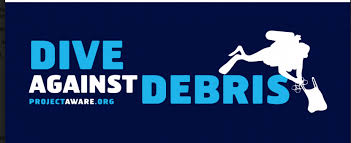
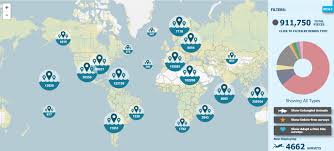
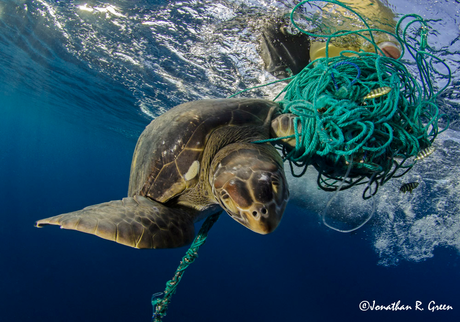
In an effort to address the global marine debris crisis, the Dive Against Debris® program empowers divers to take direct action to protect our oceans.
A Dive Against Debris® diver takes action during clean-up dives, collecting survey data on underwater debris. This data is critical for marine researchers and policymakers, enabling informed
conservation decisions. PADI divers are uniquely positioned to report, remove, and advocate against marine debris at its source.
Divers can use the Dive Against Debris® Map to submit data from their clean-up
dives. Follow the guide to record debris findings and share important details from your underwater clean-up efforts. Your contributions play a vital role in global conservation. Don’t let
your dives go to waste—every piece of debris removed contributes to healthier oceans.
For more information on how to participate and to download the survey guide, visit www.padi.com/aware/dive-against-debris.
By joining this program, you're helping to combat the marine debris crisis and contributing to the health of ocean ecosystems on a global scale.
Mola Alexandrini - Galapagos only
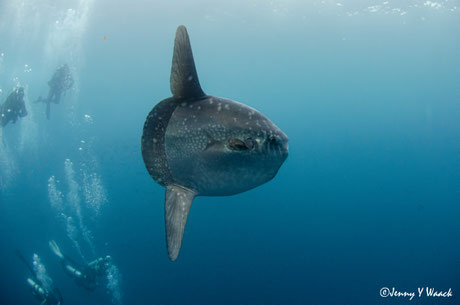
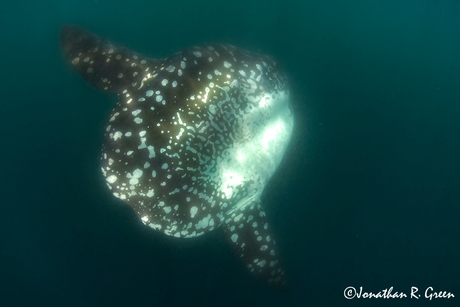
The Mola Alexandrini or southern ocean sunfish is a facinating species that can be found in the Galapagos. To help researchers monitor and learn more about this species, your photo contributions are invaluable.
If you encounter a Mola Alexandrini in the Galapagos islands, take a clear photo and submit it to support ongoing research. You can upload your photos directly through this form or email them to galapagosmola@gmail.com, along with the date and location of the sighting.
Your contributions help scientists track sightings and gather important data on this unique species. Whether it’s a new individual or a known one, your submission adds to the growing
understanding of Mola Alexandrini in the Galapagos ecosystem.
By participating, you’re playing a crucial role in the study and conservation of this remarkable marine species.
Rays (mobula, eagle & cow nose rays) - Galapagos only


The Mobula, Eagle, and Cow Nose Rays are captivating marine species often found in the waters surrounding the Galapagos Islands. To aid researchers in studying and conserving these species, your photo submissions are essential.
If you encounter Mobula, Eagle, or Cow Nose Rays, take clear photos of them and send your images to galapagosrays@gmail.com. Be sure to include the date and location of the sighting to help researchers gather accurate data.
By submitting your ray photos, you contribute to research efforts focused on tracking and understanding these species. Your sightings help scientists monitor ray populations and their movements, adding valuable insight to conservation initiatives.
Join the effort to protect these incredible rays by submitting your photos and supporting marine research in the Galapagos Islands.
Create Ocean Ambassadors & Education
With presentations about the 'Galapagos Whale Shark Project', the Galapagos ecosystem, oceans and marine life, we create more knowledge and understanding for divers and non-divers. Understanding a species better helps us protect it.
We believe that by education and inspiring people to protect our oceans we will create ambassadors who will work towards a better future for marine wildlife and their habitat.
Dive Expeditions
On board the dive vessel you will get daily detailed information about the 'Galapagos Whale Shark Project', the Galapagos ecosystem, the oceans and marine wildlife. A variety of general presentations as well as Q & A will be held in the evenings with the hope that we can answer all the questions you might have about the Galapagos
We will also explain how the fieldwork is carried out and you will have the opportunity to see the satellite tags your donations have provided for.
We will guide you as to how you can become a Citizen Scientist, not only during the trip but also how you can help with data and environmental issues when travelling or at home.
Name a Whale-Shark-Contest
The 'Name a Whale Shark Contest' by Galapagos Shark Diving is a unique initiative that connects divers with marine conservation. Each year, participants who attend our Citizen Science Expeditions have the opportunity to submit a name to the "Whale Shark Bag." At the season's end, our founder Jenny picks names according to the funds collected. In the 2023 season, for instance, we raised $17,000, enabling us to acquire three satellite tags.
Over 80% of our profits are donated to local whale shark research. For each diver traveling on our Citizen Science Expeditions, we make a donation to support research carried out by the Galapagos Whale Shark Project. Additionally, the selected names from each season are attached to satellite-tagged whale sharks, allowing participants to track the shark's journey in real-time and actively engage with the ongoing research. Through these efforts, we not only raise awareness but directly contribute to safeguarding whale sharks, promoting expanded marine protected areas and fostering a deeper understanding of these ocean giants.
This program not only enhances the diving experience but also plays a crucial role in the protection of whale sharks and the preservation of the marine ecosystem. Check out the videos of the last four years of the Name a Whale Shark Contest below to see the impact we've made together!
2024
2023
2022
2021
2020
Plastic Awareness
Galapagos Shark Diving urges travelers to minimize their plastic usage by bringing along a refillable water bottle for water, tea, or coffee during their onboard experience, as well as a reusable bag. In case a passenger forgets to bring these items, we offer branded water bottles and cotton bags for sale on board, with the profits from these purchases going directly to support the Galapagos Whale Shark Research project.

"With plastic there is no ‘away’. Our modern obsession with throw-away plastic in the name of convenience comes at a high price. Marine birds and wildlife become entangled, or choke on our plastic waste, or mistake it for food. It eventually breaks down into tiny toxic particles, which are eaten by plankton and fish, entering our food chain. A 2015 study estimated that 90% of the world’s seabirds and 25% of fish contain plastic in their stomachs." www.lessplastic.co.uk
Microplastic pollution is also a major threat to filter-feeding animals such as manta rays, whale sharks and baleen whales. These iconic animals are at risk of exposure to microplastic contamination and associated toxins.
And everybody can contribute. Even if you start with small things - just do it!
Another way of contributing is to support Beach-Clean-Ups everywhere you go. Often you will find organized Beach-Clean-Ups. And if not just do it by yourself! Everybody can contribute everywhere! Join now!










